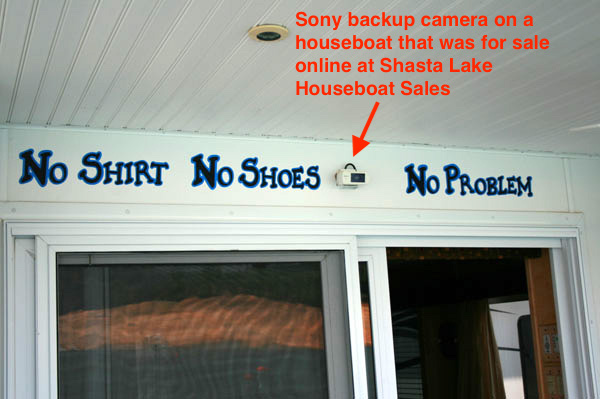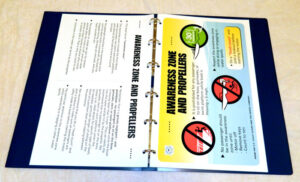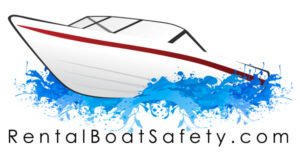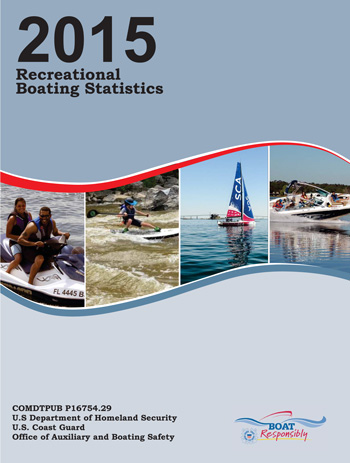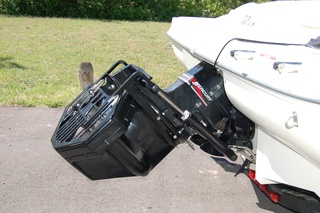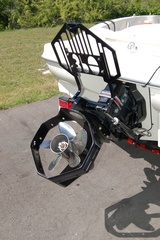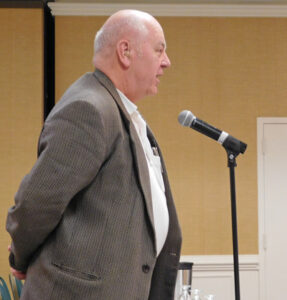Cioban v. Silverthorn: part 2: Our Comments
We previously covered the status of Cioban-Leontiy v. Silverthorn Resorts & Volvo Penta rental houseboat propeller injury case in PART 1.
As of 13 May 2019, negligence as described in part 2 of Plaintiff’s Second Amended Claim is the issue remaining in this case. Thus rental boat training, warnings, rental agreements, deficit safety features, rental checkout procedures, how many people went through the training session, and stressing the importance of maintaining a lookout are among the issues remaining to be argued by both sides.
This post covers our thoughts as we viewed the documents and status of the case on PACER along with some media reports of the accident. Our thoughts are mostly about how the history and documents surrounding previous rental houseboat propeller injury issues and cases relate to this case.
Note we are not lawyers and this post is not a criticism of any individual, firm, or entity in this case.
Our comments are divided into 3 sections.
- The first section deals with topics related to claims that may still be relevant to the case
- The second section deals with topics related to claims that may still be relevant to the case AND are also relevant to portions of the case that have been dismissed.
- The third section deals with topics related to claims that have been dismissed from the case.
Section 1:
Our Comments On Topics Still Relevant to the Case
Several Off the Shelf Alternatives Were Noticeably Absent From the Alternatives Listed
- Rear view cameras (like on many cars) have already available on some new houseboats with a video display at the helm. Semi-tractor trailer versions can be purchased at truck stops and other outlets. Motor home versions are also available. They could be installed by marina’s on their houseboat fleet.
- Backup alarm as described on page 75 of our houseboat report. Note, the alarm is an interlock in that it must sound a few seconds before the engine can be started. Also note backup alarms are available that reduce sound levels (Decibels) based on ambient noise levels.
- Doorbell switch interlock system components as described on page 75 of our houseboat report.
- Doorbell switch system interlock components as described on page 75 of our houseboat report that also activates a backup alarm
- Mercury Marine’s Updated Moving Propeller (MP) Alert for non-Mercury drives. A cluster of LED lights at the stern flashes when the engine is running in neutral, and looks like it is spinning when the engine is running.
- Visual Indicator Run Light – A light at the stern visible in bright sunlight from the swim platform and from the water near the stern of the vessel indicating when the stern drive engine was running. Note, like the Moving Propeller Alert Above, lights visible to the rear would need to be limited in power to not be confused with navigation lights. The light could also be dimmed after dark.
While some of the alternatives above may be thought of as safety devices, they are also warnings. Remote camera(s) can warn the operator when someone is in the water at the stern. Backup alarms warn those in the water the houseboat is or is about to be backing up. Mercury’s Moving Propeller Alert warns those at the stern the engine is running or the propeller is engaged. If no one operates the doorbell button interlock system it warns the operator nobody is in place as a spotter at the stern.
Holiday Harbor – Backup Alarms public comment letter
Holiday Harbor, from whom Captain Timmel interviewed a manager as part of his survey of rental houseboat practices on Lake Shasta sent a public comment letter to the U.S. Coast Guard back in 1995 in which they opposed the use of propeller guards on houseboats. In that letter, the president of Holiday Harbor stated, “An alternative would be a sounding device when a drive is engage in reverse.”
Holiday Harbor was proposing a back up alarm as an alternative to propeller guards on rental houseboats well over 20 years ago.
Reference: Stephen C. Barry, President, Holiday Harbor, public comment letter to U.S. Coast Guard referencing CGD 95-041 dated October 30 1995. Public comment letter #1907.
Rental Boat Training
Most rental houseboat propeller accidents occur with people in the water at the stern or entering the water moments before or after the engine/propeller is reversed.
Rental houseboat training programs tend to focus on how to operate all the various equipment and systems onboard, how to operate the boat, responsibilities of the persons allowed to operate the boat, beaching the boat, unbeaching the boat, how to use the radio, and safety issues such as the need for a lookout at the stern when starting or backing up the boat, the dangers of propellers, and the dangers of high winds.
“Situational awareness” at the helm is very difficult for rental houseboat operators to maintain throughout the rental. It is very easy for the operator to loose situational awareness at the helm. The houseboat operator is typically inside a cabin, shielded from outside noises, the cabin can provide many distractions especially in a party/vacation atmosphere. Boater fatigue from sun, waves, glare, vibration, and noise dulls their senses and response times. Sometimes the operator may be away from the helm or just daydreaming at the helm when a situation arrises in which they have a need or perceived need to conduct some sort of evasive maneuver (drifting toward rocks or toward another vessel, or toward a swimmer) or a recovery maneuver (retrieve some person or thing from the water at the stern, such as a hat in this instance). Any rental boat training about the need to have a spotter / lookout at the stern quickly fades from at least some of their minds when they face an immediate task in this environment with no visual cues from the stern.
Sitting at the helm of larger houseboats feels more like you are sitting at a desk. You are detached visually and physically by distance to the outboard or stern drive and inputs from outside the vessel you forget about your surroundings. It feels almost like you are sitting there playing some sort of board game with the gages, switches, and controls. The situational awareness problem can be at least partially be overcome by use of a rear view video camera at the stern displaying live video at the helm(s).
Some rental boat firms send out training videos or DVD’s before you visit the marina, others make them available online. We have also seen training DVDs on the houseboat for use during the rental period.
Forever Resorts Lake Oroville Marina on Lake Oroville is a couple hours South of Lake Shasta. Their Boating Safety page provides an example of some of the types of instructional and training materials that can be made available online.
Coast Guard Rental Houseboat Training Materials
Rental houseboat training has long been raised as a rental houseboat safety concern.
Back in March 2006 a U.S. Coast Guard / American Boat & Yacht Council (ABYC) Workshop launched the effort to create rental boat training materials. In March 2008 the resulting large flip charts and check sheets were delivered to several test sites.
Years later, the National Boating Safety Advisory Council updated those charts. They were then placed online as part of a Coast Guard grant and were recently still viewable at RentalBoatSafety.com. We no longer see the large charts there at this time.
They do have a houseboat rental training checklist that was once in the form of a pad of tear off sheets.
RentalBoatSafety.com even sends out free training videos to houseboat rental operations.
If you check RentalBoatSafety.com’s list of participating marinas in California, Silverthorn is on the list. That seems inconsistent with statements by the marina about the lack of availability of training materials.
Vertical Lines Through Check Off Lists
As in this case, several times in rental boat propeller cases marinas provide a copy of the training / check out sheets used on the fateful voyage during discovery. Each item has an individual checkbox to the left of it, however one long vertical line is drawn through all of them at once and the sheet is initialed by the renter at the bottom. This practice obviously has problems. There is no record the items marked were individually discussed. The list was not checked off as each task was accomplished. They just drew a long vertical line through them at the end.
Would you buy a new car or boat that went through a similar checklist to make sure everything was safe and operational before you purchased it if the checklist had a similar vertical line drawn through it?
Engine Sounded Like the Generator
Ms. Cioban said when she jumped in she heard something running but she thought it was the generator, not the stern drive engine.
If renters are actually confused between the sounds of the generator and the stern drive engine, as part of Silverthorn’s warning efforts they could do something to make them sound considerably different and make sure those on board knew how to tell which one was the stern drive engine.
A sound engineer could gather data on the comparison of the two sounds by typical renter houseboat passengers under typical conditions encountered on a rental houseboat. However, we suspect loud music and other noises associated with rental houseboats could often drown out either sound, especially when the stern drive engine is at idle. An indicator light or some other method of signaling the engine is running would likely be a more positive indictor.
Standard of Care
One of the challenges to Plaintiffs in bringing forward a houseboat rental case in part based on lack of proper training of those renting the vessel is the lack of a widely known and widely accepted set of national guidelines for rental houseboat safety training programs. That sounds like a place NASBLA (National Association of State Boating Law Administrators) could apply for a Coast Guard grant to develop some guidelines. Houseboat rental operations could probably request NASBLA to do so if they so desired. NASBLA has been historically involved in developing standards for much of the materials in normal boating safety training programs.
One way to get a feel for the typical training session at a specific houseboat rental operation is by using “secret shoppers”. Legal firms send a group in to rent the houseboat and go through the training. Legal firms have sent in safety and security professional to tape presentations in similar settings of Cruise ship excursion vessels in the past.
Dr. Osinski (expert for Plaintiff) put forth some statements concerning the standard of care of rental houseboat operations concerning training and other issues on Lake Shasta.
The Defense challenged her statements as not being fact based. As mentioned in Part 1 of this post the Court said then would Defense attorneys could challenge those statements during the trial if they so desired.
This Standard of Care discussion is all brought about by the industry not developing national rental houseboat safety training standards for the materials to be covered such as those developed by NASBLA for other types of vessels and situations.
Section 2:
Our Comments on Topics Still Relevant to the Case that Also May be Relevant to Portions of the Case That Have Been Dismissed
Smotherman Houseboat Propeller Accident
In Captain Timmel’s (expert for the defense) rebuttal of Dr. Osinski’s (expert for the Plaintiff) report in the Cioban case, Captain Timmel said, “Of the two propeller strike incidents they (Silverthorn) have had, Ms. Cioban’s was the first in their long history, so the second one is not pertinent to this case and there has been no further occurrence. Mr. Reha (Silverthorn’s manager) said he is aware of only one other propeller strike accident, which he said he believed occurred in the early ‘90s.” (for reference see Pages 21-22 of PACER Document #86).
Captain Timmel was referring to the Jenny Smotherman houseboat propeller accident that occurred on a Silverthorn houseboat powered by a Volvo Penta stern drive about June 6, 2015. Ms. Smotherman is said to have jumped in behind the houseboat while the boat was in gear. She was cut on both legs and likely taken to Mercy Hospital.
We do not agree with Captain Timmel on this point. The Smotherman accident appears to share the following similarities with the Cioban accident (adult, female, propeller accident, houseboat, rental houseboat, Lake Shasta, Silverthorn Resort, stern drive, Volvo Penta stern drive, jumped in at stern, struck by propeller, struck in both legs, likely taken to Mercy Hospital in Redding). When an accident that similar happens about a week after the Cioban accident it is hard to imagine it is not pertinent to this case. If these two accidents had occurred on the factory floor of a manufacturer a week apart, that company’s workplace safety programs would be all over both accidents to make sure nothing like this ever happened again at their factory (if OSHA had not already closed them down).
Rental Houseboat Propeller Accidents Are Invisible on BARD
The U.S. Coast guard publishes an annual report summarizing recreational boating accidents in the United States. At this moment, the most recent copy is 2017 Recreational Boat Statistics. Shortly after the annual statistical summary is released, the Coast Guard releases the public portion of the underlying database used to generate the report.
Historically USCG BARD reported Shasta rental boat accidents are as rare as hen’s teeth. Which sounds good, but there are three reasons (Barriers) why Lake Shasta rental boat accidents are invisible to BARD.
BARRIER 1 – boat rental operations rarely turn in boat accident reports. The actual responsibility of filing the report typically lies with the injured party or with the responding law enforcement agency. Boat rental marinas have no incentive to make sure the accidents are reported. However, they do have an incentive to not report them (not good to have lots of accidents reported from your marina).
BARRIER 2 – for decades the National Park Service (NPS) has often been the body receiving Lake Shasta boat accident reports if one is filed. The National Park Service has long resisted sending those accident reports on to the Coast Guard (which can now be done digitally).
BARRIER 3 – in the rare event that an individual reported a Lake Shasta rental boat accident directly to the California Boating Law Administrator, the State of California refuses to supply individual boat accident data to the Coast Guard’s public BARD database citing privacy reasons. The State of California does turn in summary data for use in the Coast Guard’s annual Recreational Boating Statistics publications.
At the moment, we do not see ANY boat accident of ANY type on ANY kind of boat in the State of California on the Coast Guard Public BARD database since 1995.
Bottom line is you sure don’t see many Lake Shasta rental boat accidents in the database that is supposed to be used to monitor problems and to estimate the frequency of these accidents.For example, the Coast Guard’s 2015 Recreational Boating Statistics report is supposed to include California summary data. It shows zero houseboat propeller strikes for the entire country in 2015 on page 41. Note the data on page 41 is for first event only (they report accidents as a series of events). But seems to us like both of these accidents (Cioban and Smotherman) would have been first events (for example the boat did not collide with something else first).
The cloaking of rental boat accident data by the State of California is one of the elements that leads to accidents like this one.
Alcohol
Early news reports stated alcohol did not appear to be a factor in this accident. Those news reports plus Volvo Penta not aggressively trying to lay the blame on individuals due to alcohol consumption leads us to believe alcohol is still not considered to be an issue in this case.
Alcohol is frequently raised as an issue in rental houseboat product liability cases and has been done so by Volvo Penta in the past. Such as this statement:
“It also recognized the real reason for many of these accidents and fatalities: the failure of the individuals involved to use ordinary care in the operation of these boats combined with their use and/or abuse of alcohol. Therefore, it recommended that no new regulations be promulgated by the Coast Guard concerning propeller guards for any type of boat or situation.”
The statement above comes Volvo Penta’s 29 August 1996 public comment letter to the U.S. Coast Guard concerning a proposed rental houseboat regulation (Reference # USCG-2001-10299-63). In that same letter, Volvo Penta made what some would call a personal attack on a family involved in a rental houseboat product liability case related to alcohol consumption and their deceased daughter.
If alcohol is truly not an issue in the Cioban-Leontiy case we are surprised Plaintiff does not make an issue about their client and the boat operator at that time taking an extra step concerning their personal safety of not abusing alcohol, but Plaintiff was still injured anyway. This could indicate the vessel was dangerous even to sober people.
Section 3:
Our Comments on Topics No Longer Relevant to This Case
History and statistics were absent during product liability and strict liability discussions of the case.
- Houseboat propeller accident statistics such as an updated version our list of houseboat propeller accidents along with a sublist of houseboat propeller accidents at Shasta, and a sublist of all rental boat accidents at Lake Shasta.
- Its hard to envision a houseboat propeller injury case on Lake Shasta without Keith Jackson presenting some of the local history, especially that related to propeller injuries and propeller guards.
The boating industry always wants to segment and conquer accident statistics. As you read the materials in the Cioban case it is as if a rental houseboat accident from another marina on Lake Shasta has no bearing on Silverthorn’s responsibility to prevent such accidents.
Shasta has a handful of well known houseboat rental operations. Suppose rental houseboat propeller accidents started happening once a month first at one vendor and then at the next. If Silverthorn was near the end of the list would Silverthorn not have responsibility to take action to prevent such accidents at their marina before they had one themselves?
Dr. Mendez-Fernandez An History of Lake Shasta
Dr. Mendez-Fernandez, a plastic surgeon at Plastic Surgery Associates of Redding (California), has treated many Shasta Lake propeller victims over the years. He spoke out in favor of the use of propeller guards for a long time.
Back in 1998 Dr. Mendez-Fernandez wrote a technical paper on his work with propeller injury victims and called for the use of propeller guards.
Motorboat Propeller Injuries
Miguel A. Mendez-Fernandez, M.D., FACS, FICS
Annals of Plastic Surgery
Vol.41. No.2 (August 1998). Pgs.113-118.
In responded to U.S. Coast Guard’s call for public comment on a proposed houseboat propeller safety regulation in a February 6, 2002 letter to which he attached a copy of his paper:
His letter and paper are available as USCG-2001-10163 Docket Item #28. (click on red PDF icon to left side of the page below descriptive text)
Dr. Mendez-Fernandez’s paper includes this statement:
“I feel strongly that most of these accidents could have been prevented. The utilization of propeller guards in houseboats, patio boats, and low-speed rental boats should be encouraged, if not mandated (as it is on desktop cooling fans!)”
Some Specific Propeller Guards Were Noticeably Absent From the List of Alternatives Provided
- Alternative #A1 the guard alternative used in Federal Case (Brochtrup v. Sea Ray & Mercury Marine) won by Plaintiff. 3PO flip up guard (see photos above). Note- 3PO guards are especially designed for use on stern drives such as the Volvo Penta stern drive in the Cioban case.
- Alternative #A2 Keith Jackson’s Swim Guard, a full cage propeller guard produced near Lake Shasta.
- Alternative #A3 Build your own (DIY) ladder interlock system. The existing patented system only claims such a system if it includes an override. To us it looks like anybody can purchase a marinized magentic switch or proximity switch and wire their own up without an override if they wish. (see page 141 of our houseboat report)
Virtual Propeller Guards
I first coined this phrase long ago. In 2002 I wrote a definition for the phrase and posted it online. That post is now on our Virtual Propeller Guard Terminology page.
Note the comment immediately under the definition in which we state, “The Definition of a “Virtual Propeller Guard” has since been extended to include devices predicting or anticipating an increased probability of a hazard or safety issue near the propeller.”
In layman’s terms the phrase Virtual Propeller Guards also includes devices that predict or anticipate an increased probability of somebody being near the propeller when it is rotating.
Thus Virtual Propeller Guards do not only apply to “gee whiz” systems of the future, it applies to current systems like ladder interlock switches, swim gate interlock switches, kill switch lanyards, virtual lanyards / wireless lanyards, and rear view video camera systems with video displays at the helm.
Many Virtual Propeller Guards could be considered warnings, as they warn the operator or the vessel of an increased risk of someone being near the propeller.
Federal Pre-emption
The Federal Preemption discussion in Cioban case documents is not consistent with our understanding. The boating industry lost the federal preemption defense when Mercury Marine lost the Sprietsma case in the U.S. Supreme Court in December 2002. Read the Supreme Court opinion or clips from it on our recent discussion of Ryan’s Law and Federal Preemption. Volvo Penta talks like the federal preemption defense still exists.
Numerous propeller injury cases with propeller guard product liability claims have been filed since December 2002. For example, Richard Rozon v. Armamark et al. U.S. District Court, District of Utah, Central Division. Propeller guard claims were made in the Rozon case in Federal court regarding a rental houseboat propeller fatality on a Lake Powell. Those claims were not preempted.
Propeller Guard Test Protocol
Below is clip from a presentation back when the Coast Guard was developing their propeller guard test protocol. As you can see a cage type propeller guards was looked at favorably for slow moving vessels in the boat performance and handling portion of the test. ABYC refers to the American Boat and Yacht Council, the boating industry’s voluntary standards organization. That is MariTech’s (Keith Jackson’s) Swim Guard propeller guard in the image.
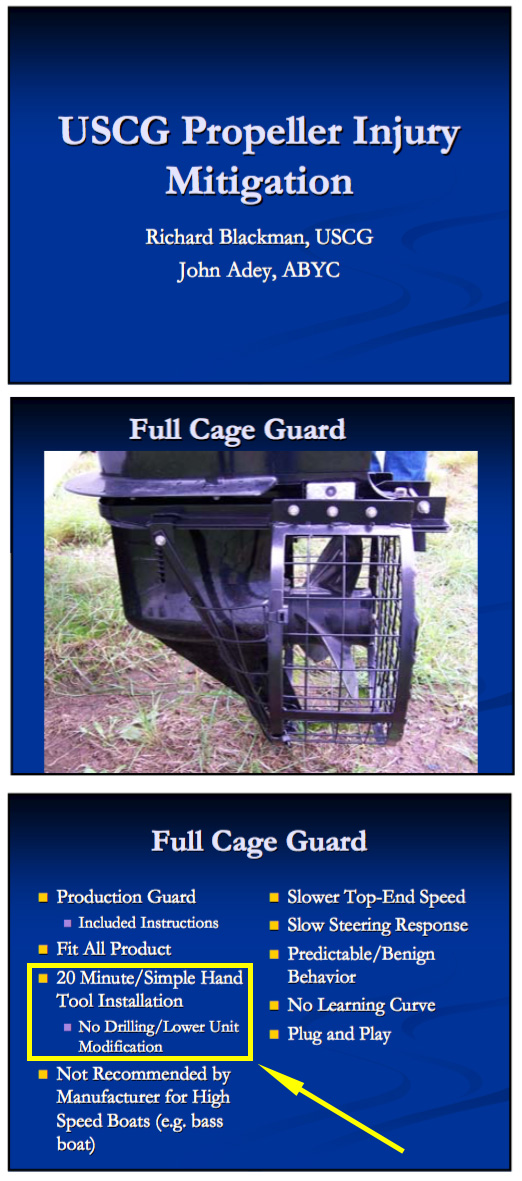
Cage Guard in USCG/ABYC presentation on status of protocol being developed for testing propeller guards. Presented at IBEX in 2007.
Federal Preemption Claims by Volvo Penta
In PACER document #1-6 Federal Preemption section on page 86 of 107, Defense directly says the propeller guard and product liability claims against Volvo Penta are preempted by:
1. The Federal Boating Safety Act of 1971
2. The Coast Guard rejecting USCG-2001-10163 in 2007.
3. The National Park System Act because Shasta is part of their jurisdiction.
In PACER Document #1-6 on page 6 line 6 Volvo Penta states “Plaintiff’s propeller guard claims are completely and expressly preempted by federal law.”
On page 6 line 16 of the same document Volvo Penta states, “Likewise, Plaintiffs specific claim that the accident houseboat should have been equipped with a propeller guard or other similar device is completely and expressly preempted under federal law pursuant to 46 U.S.C. § 4306 (Federal Preemption).”
Volvo Penta’s preemption comments are not consistent with rental houseboat propeller guard product liability cases on Lake Shasta and elsewhere since the December 2002 Sprietsma decision. Or with many recreational boat product liability cases concerning propeller guards across the country.
Federal Pre-emption Comments by Plaintiff
In the Good Faith Dismissal of Volvo Penta document (PACER Document #51 page 5) Plaintiff summarizes a portion of the U.S. Supreme Court Sprietsma opinion in bold letters, “neither the Coast Guard’s refusal to promulgate a regulation requiring propeller guards on motorboats or any subsequent regulatory actions by the Coast Guard had any pre-emptive effect” and cites pages 55,67-69 of the opinion. Just two lines later in the Good Faith document, Plaintiff says, “It is therefore clear that VOLVO had no duty to equip its propellers with guards to provide personal injury protection.
Plaintiff read the opinion much differently than we understand it. The opinion of the Supreme Court was that Federal Preemption does not exist with respect to propeller guards and the 1971 Boating Safety Act, AND that these later Coast Guard decisions had no effect on that decision.
Boating Industry Cites 2007 USCG Rejection of Houseboat Propeller Guard Proposal
Several mentions in this case were made by boating industry attorneys citing the U.S. Coast Guard’s rejection of the ANPRM for houseboat propeller guards (USCG-2001-10163).
We spent a few years writing a lengthy report on why that decision was made erroneously, but all you have to read is pages 2,3,4 to see the analysis used to reject the proposal was wrong.
Now, in Cioban v. Silverthorn, the industry is touting USCG’s rejection of the houseboat propeller guard proposal in 2007 as a reason why propeller guards should not have been on this vessel. As to USCG 2001-10163 being rejected, as detailed in the three page reference above, it was obviously improperly rejected which should make any preemption based upon it void. In addition, if the 1990 NBSAC propeller guard subcommittee report and had no impact on federal preemption as the Sprietsma decision states. Why would a similar later decision have any impact on preemption? And why have other product liability propeller guard lawsuits proceeded since 2007?
Propeller Guards Are the Last Defense Against a Propeller Strike
Many houseboat propeller accidents occur when something is a bit out of the ordinary and the operator or someone else decides to backup the houseboat due to a real or perceived immediate need (houseboat is blowing toward rocks, wondering if houseboat is grounded on the beach, someone’s hat blew off, houseboat is about to drift into another vessel or into a swimmer.) In at least some fo those instances any rental training seems to evaporate and the individual just hustles to the helm and backs up the houseboat.
Quick choices and actions during events such as those described have driven the need for various types of devices that provide important data to rental houseboat operators or swimmers making snap decisions. These devices include doorbell interlock switches, backup alarms, swim ladder interlocks, Mercury Marine’s Moving Propeller (MP) Alert, and video cameras at the stern feeding visual displays at the helm.
But even the devices listed above will fail to protect those in the water in at least one of the many situations imaginable.
Full cage type propeller guards are the only way to positively prevent these accidents.
Years ago I started to sketch an AND/OR logic chart showing how various paths to a houseboat propeller accident at the stern. It was quickly obvious that propeller guards were the last possible defense after one of more other safety measures, including training, failed.
Keith Jackson Propeller Guard Demonstration Video

Keith Jackson’s feet and legs in a wetsuit against his Swimguard propeller guard while houseboat is running in reverse.
Screencapture from “Swimguard: Designer’s Endorsement
Houseboat Industry Association
We found it strange there was no mention of the Houseboat Industry Association (HIA) in the standards / collaborative / resources discussions in the Cioban case. HIA is (or at least was) a sub organization of the National Marine Manufacturers Association (NMMA). One of their joint efforts was supposed to be houseboat safety.
HIA strongly opposed USCG-2001-10163, the Coast Guard’s houseboat propeller safety Advanced Notice of Proposed Rulemaking (ANPRM).
It looks like HIA no longer exists.
We suggest the facilities and business near Lake Shasta associated with the rental houseboat industry consider forming their own association focusing on common issues (like responding to water level issues, safety issues, responding to one another’s boats in emergencies, keeping alert to carbon monoxide issues, supporting the Shasta Country Sheriff Boating Safety Unit, parking lot security, minimizing employee crime, environmental compliance issues, etc.) For example they could meet a few times a year, rotating between participating marinas, with some time for networking as well. They might be able to get vendors to demonstrate new safety products and hear from related local businesses as well.
Other Shasta Propeller Accidents
We find Mr. Reha’s (Silverthorn manager’s) comments about only being aware of three propeller accidents per Captain Timmel (the two at Silverthorn in 2015 plus one from the early 1990s) not consistent with what one one would hope for given their responsibilities.
There have been many severe propeller accidents over time on Lake Shasta including many houseboat propeller accidents. See the list we once prepared and look for Shasta in the location column. Note many of the earlier accidents are only located by state or by state & county.
Several years ago we were at the Shasta Country Sheriff Boating Safety Unit office at Bridge Bay. They had several photos of Shasta propeller injuries out in the hallway to try to raise awareness of propeller injuries.
We would hope marina managers were closely following all propeller accidents on Shasta, regardless of whether the accident was associated with their marina or not. Much can be learned from studying similar accidents.
What About Shrayber?
As to federal preemption and Lake Shasta, Felix Shrayber was injured in 2000 by a Holiday Harbor rental houseboat on Lake Shasta. The case was tried and lost by the plaintiff just prior to the end of the Federal Preemption defense (prior to December 2002). The Shrayber case was perhaps the first case to be appealed after the federal preemption defense was struck down.
Seems like the Shrayber case destroys preemption arguments on Shasta AND is pretty rough on Kevin Kelly’s (operation manager at Holiday Harbor’s) report to Captain Timmel on page 17 of Captain Timmel’s rebuttal in which “Mr. Kelly confirmed that Holiday Harbor has had a propeller strike accident, approximately two years ago, caused by a woman who was bow riding.” He was likely speaking of the L.M. 9 September 2017 rental ski boat propeller accident. But Mr. Kelly made no mention of the Shrayer rental houseboat accident that resulted in a lawsuit against Holiday Harbor.
In the case below, Shrayber won the right to continue his case after it was earlier lost due to federal preemption. Note this case was filed just a few months after Federal Preemption was struck down by the Sprietsma case.
FELIX SHRAYBER et al., Plaintiffs and Appellants, v. HOLIDAY HARBOR, INC., Defendants and Respondents.
A099975
COURT OF APPEAL OF CALIFORNIA, FIRST APPELLATE DISTRICT, DIVISION ONE
2003 Cal. App. Unpub. LEXIS 5037
May 22, 2003, Filed
The opinion rendered by the court above per Lexis Nexis was:
“Plaintiffs Felix and Irina Shrayber appeal from a summary judgment in favor of defendant Holiday Harbor, Inc. dba Holiday Harbor Resort & Marina. Plaintiffs sued defendant for injuries suffered when Mr. Shrayber was pulled into the propeller blade of a houseboat owned by defendant. Plaintiffs contend the judgment rests on federal preemption cases that have been overturned by a recent decision of the United States Supreme Court. We agree, and reverse the judgment.”
The Shrayber case based in part on product liability issues concerning propeller guards was alive again. Federal preemption did not apply to Shrayber’s claims concerning propeller guards.
Richard Snyder’s Comments
Richard Snyder, now retired from Mercury Marine and long time propeller injury case expert witness for Mercury Marine, has said on multiple occasions that propeller guards could be used effectively on slow moving houseboats in the absence of shallow water or weeds. For example:- Richard Synder interview in Soundings Trade Only, July 1996 article titled, ” Emilio’s Mom Revives Prop Guard Debate”.
“Yet he acknowledges that in specific situations – where boat speeds are subplaning and the waters are not too shoal or full of weeds – a prop guard could work safely on a houseboat.”
- Richard Snyder 2002 letter against proposed houseboat propeller safety regulations. Mercury Marine letter to USCG dated 26 February 2002. USCG Docket Item # USCG-2001-10163-106. Page 4.
“A well designed, well built, all encompassing cage type prop guard with smaller hole sizes designed for suitability on 10 mph maximum speed or less vessels can be beneficial with SOME of the accidental contacts on SOME waters (non-weedy, non-shallows).”
Waterway Houseboats Dismissed From Case
Plaintiff dismissed Waterway Houseboats, a Canadian boat builder, from the Cioban case and said Waterway Houseboats no longer exists.
My recollection is that Waterway Houseboats was a houseboat rental operation on Shuswap Lake in British Columbia Canada that built their own boats and offered them for sale to others. I see they are still operating a houseboat rental operation and still selling their used houseboats. The firm may no longer be building houseboats, may have gone through some sort of bankruptcy, or the houseboats may have been built by some no longer side business. However it certainly looks likely that at least some vestiges of the firm remains.
Return to PART 1
Updates to Cioban-Liontiy vs. Silverthorn case
The end
